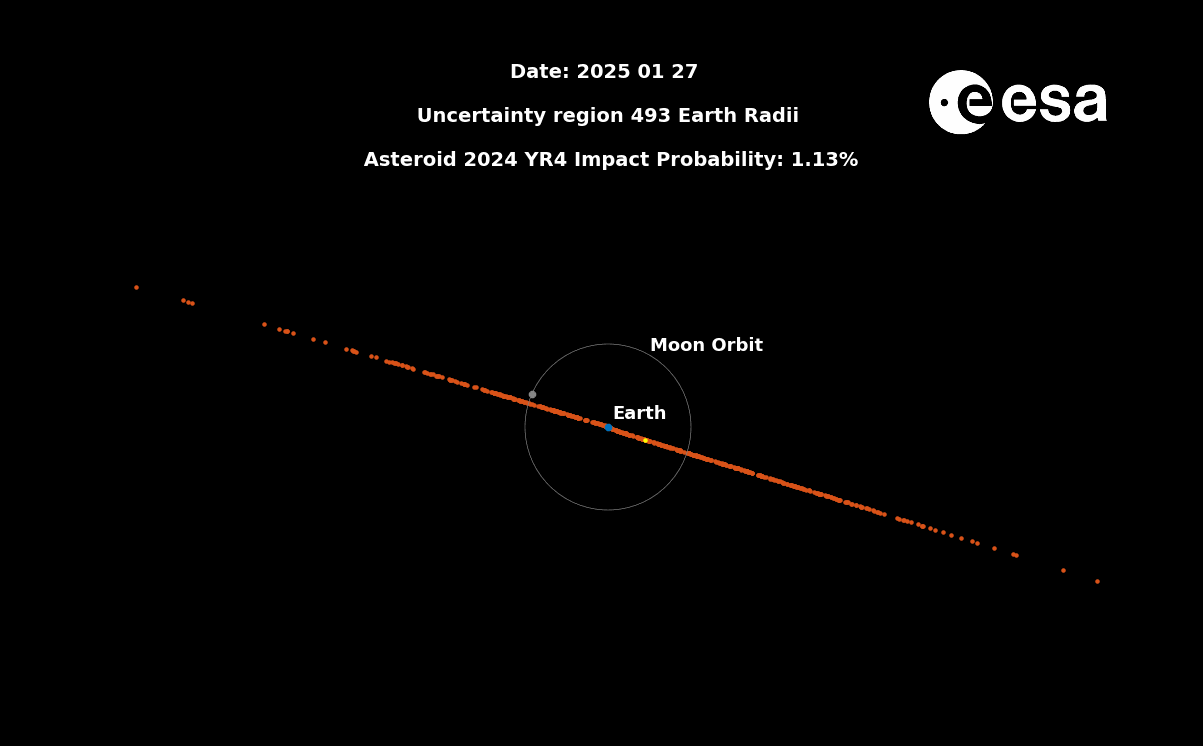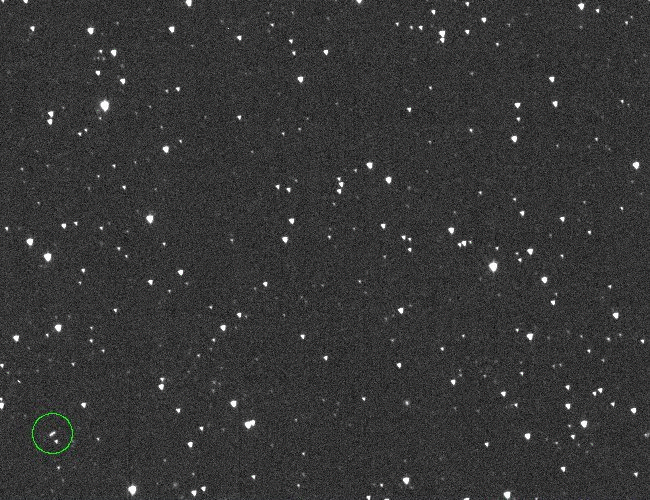Outer Space
This Comprehensive Guide Will Answer the Questions You Have About Black Holes—and Spark Some New Ones
In a new book release, two scientists combine forces to explain the discoveries, developments and theories made in the realm of the densest objects in space
The Six Most Amazing Discoveries We’ve Made by Exploring Uranus
Its bland exterior belies a dynamic world full of surprises
How to See This Month's Stunning 'Blood Moon,' the First Total Lunar Eclipse Since 2022
On the night between March 13 and 14, most of North and South America will be in for an astronomical treat
See the Striking New Images From the Blue Ghost Lunar Lander, Now the Second Private Spacecraft to Touch Down on the Moon
Firefly Aerospace's lander reached lunar soil early Sunday morning, after a 2.8-million-mile journey lasting 45 days
Is the ISS Too Clean for Astronauts’ Health? New Study Finds the Space Station Lacks Microbial Diversity
Humans have evolved alongside microbes in Earth's environment that help strengthen our immune systems. But sterile living conditions can reduce that beneficial exposure
Seven Planets Will Gather in the Night Sky This Weekend. Here's What to Expect During the Rare Alignment
While such a lineup is uncommon, the event might not look exactly how you’re imagining it
Athena Spacecraft Launches to the Moon, as Intuitive Machines Aims for Historic Second Lunar Landing
The American company achieved the first successful moon landing by a private spacecraft last year. Now, it has sent a new mission to the south pole, carrying science instruments for NASA
The 'Riskiest Asteroid Ever' Is No Longer a Threat as Impact Probability Drops to Near Zero
As astronomers predicted, asteroid 2024 YR4 is not expected to hit Earth in 2032. This week, NASA gave the “all clear”
SpaceX Rocket Stage Burns Up Over Europe and Crashes in Poland, While Blue Origin Debris Washes Ashore in the Bahamas
The SpaceX rocket failed to deorbit properly, and the Blue Origin debris had already landed as planned in the ocean
James Webb Telescope Reveals a Dazzling Light Show From the Milky Way’s Black Hole
Unpredictable bursts of light are pulsing from the debris surrounding Sagittarius A*, offering new insights into the mysterious behavior of the most massive object in our galaxy
Chance of Asteroid Strike in 2032 Drops Sharply After Record-Setting Rise. Here's Why It Keeps Changing
NASA announced that asteroid 2024 YR4 now has a 0.28 percent chance of hitting Earth in 2032, but that number is expected to continue shifting with further observations
A Record-Breaking 'Ghost Particle' From Outer Space Made a Splash of Light in the Mediterranean
The neutrino was 30 times more energetic than any other previously observed particle of its kind. Scientists still don’t know exactly where it came from
Could This Space Oven Allow Astronauts to Finally Cook in Space?
An aerospace engineer has invented an appliance that can whip up quiches, pizzas and more in a zero-gravity environment
An Enormous, Branching String of Galaxy Clusters Is the Largest Known Structure in the Universe, Scientists Say
The cosmic superstructure Quipu is more than 13,000 times the length of the Milky Way, and its mass is 200 quadrillion times that of the sun, according to preliminary research
Venus, the Planet of Love, Will Shine Bright on Valentine's Day. Here's How to See It
Around the time of your romantic dinner, head outside and look to the southwest to spot the super brilliant planet in the night sky
Astronomers Discover Extremely Rare Einstein Ring in Early Euclid Telescope Data, Revealing Warped Space-Time
Such examples of gravitational lensing can help astronomers learn more about the properties of dark matter
The Otherwise Unremarkable 'Rock Boxes' That Brought Pieces of the Moon Back to Earth
Far from ordinary, it took a cutting-edge NASA design to safeguard these treasures during the Apollo missions
Two of the Moon's Grand Canyons Were Formed in Just Ten Violent Minutes, New Study Suggests
Scientists say Vallis Schrödinger and Vallis Planck—dramatic trenches near the lunar south pole—were carved in a blast that unleashed 130 times the amount of energy in Earth's global nuclear weapons inventory
Astronomers Suspect Colliding Supermassive Black Holes Left the Universe Awash in Gravitational Waves
Radio telescopes tracking signals from spinning, ultra-dense stars point to ripples in the fabric of space
Are Humans the Only Species to Drive Others to Extinction? And More Questions From Our Readers
You’ve got questions. We’ve got experts
Page 1 of 77
:focal(3987x2259:3988x2260)/https://tf-cmsv2-smithsonianmag-media.s3.amazonaws.com/filer_public/53/38/53385ad2-6907-4d00-a068-f7689882f139/gettyimages-1240620228.jpg)
:focal(800x602:801x603)/https://tf-cmsv2-smithsonianmag-media.s3.amazonaws.com/filer_public/f4/f9/f4f9d06d-0966-4fb8-be38-70437bd64d04/main_stsci-01evstta34sm681cb3t49545g4_web.jpg)
:focal(1024x683:1025x684)/https://tf-cmsv2-smithsonianmag-media.s3.amazonaws.com/filer_public/ce/bf/cebf029a-7920-4501-91ac-813e5e061188/42122269450_65fed02cc1_k.jpg)
:focal(1500x1129:1501x1130)/https://tf-cmsv2-smithsonianmag-media.s3.amazonaws.com/filer_public/43/4c/434caa1a-4edb-4fad-a174-3b35dda5dda6/54362872324_50b58cd770_o.png)
:focal(2144x1429:2145x1430)/https://tf-cmsv2-smithsonianmag-media.s3.amazonaws.com/filer_public/ce/74/ce74a100-d39d-4115-9da2-e5987c298d1c/7852627286_a40af82ec5_o.jpg)
:focal(3306x1083:3307x1084)/https://tf-cmsv2-smithsonianmag-media.s3.amazonaws.com/filer_public/ae/80/ae80c929-5ced-4ba2-811f-00af05d3fc49/celebrating_matariki_-_maori_new_year_-_flickr_-_geoff_j_mckay.jpg)
:focal(1156x781:1157x782)/https://tf-cmsv2-smithsonianmag-media.s3.amazonaws.com/filer_public/ef/9b/ef9b9062-9c05-4b5d-92f1-738131fa759a/gettyimages-2201574543.jpg)

:focal(2208x1472:2209x1473)/https://tf-cmsv2-smithsonianmag-media.s3.amazonaws.com/filer_public/61/9c/619c02b1-efb1-4998-90c7-5f693bae0733/gettyimages-2184847482.jpg)
:focal(402x164:403x165)/https://tf-cmsv2-smithsonianmag-media.s3.amazonaws.com/filer_public/24/71/2471d4ed-706b-4ccb-a81c-6402be58dbee/blackholetiff.jpg)

:focal(2896x1944:2897x1945)/https://tf-cmsv2-smithsonianmag-media.s3.amazonaws.com/filer_public/c9/d2/c9d27869-330f-449c-ba26-d4e54e3f25c6/03_credit_n_busser_cnrs.jpg)
:focal(500x376:501x377)/https://tf-cmsv2-smithsonianmag-media.s3.amazonaws.com/filer_public/b1/52/b152f790-c7d6-4a09-b3d2-0a0372ecdca9/pulling-pizza-out-of-sated-quxuij645fzct85hganltl28jbqlrnhc1l2cmlhe16.jpg)
:focal(866x866:867x867)/https://tf-cmsv2-smithsonianmag-media.s3.amazonaws.com/filer_public/7c/1b/7c1b44b1-02cd-4716-a0ed-70e4659ed178/gettyimages-758303179.jpg)
:focal(960x722:961x723)/https://tf-cmsv2-smithsonianmag-media.s3.amazonaws.com/filer_public/9b/47/9b47be8e-0484-45f1-af70-e18bae1608c5/grc-2012-c-02176large.jpg)
:focal(2332x2355:2333x2356)/https://tf-cmsv2-smithsonianmag-media.s3.amazonaws.com/filer_public/e0/99/e09987ea-e52f-4726-89c2-1edb09f96def/euclid_image_of_a_bright_einstein_ring_around_galaxy_ngc_6505.jpg)
:focal(1400x1053:1401x1054)/https://tf-cmsv2-smithsonianmag-media.s3.amazonaws.com/filer_public/f7/8e/f78e0f7d-1ff7-4830-82aa-7ffe6b3aa425/martin240625si_2406250163_v5_rgb_copy.jpg)
:focal(661x524:662x525)/https://tf-cmsv2-smithsonianmag-media.s3.amazonaws.com/filer_public/80/f8/80f800b0-ef97-4854-a1e1-ca50f4e47e0a/screenshot_2025-02-10_at_10233pm.png)
:focal(453x341:454x342)/https://tf-cmsv2-smithsonianmag-media.s3.amazonaws.com/filer_public/e5/4b/e54b7362-5aee-46ec-a3cf-8fa18701d850/meerkat_radio_telescope_web.jpg)
:focal(918x691:919x692)/https://tf-cmsv2-smithsonianmag-media.s3.amazonaws.com/filer_public/b5/aa/b5aaab72-70d9-4019-8496-ea066448da41/ask.jpg)